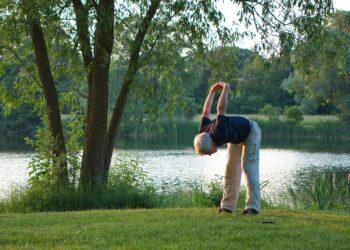The larger the breast size, the less likely women are to engage in physical activity because of the discomfort. There are ways to reduce this discomfort, but the matter isn’t really talked about.

We all know that working out is good for you, and yet the vast majority of people rarely or ever work out. There are several reasons for this, but one of the most important reasons is discomfort. Working out can be inherently difficult (especially when you’re unfit) and any additional discomfort can tip the scales against working out.
In addition to a number of diseases and conditions, there’s another factor which can cause workout discomfort: breasts.
Breasts are essentially unsupported and unstabilized tissue. Breasts can be quite heavy and wobbly during running and exercising, causing discomfort and even pain. As women all around the world can attest (and studies have confirmed), when women run braless, their breasts oscillate up and down as well as sideways, which often causes pain. A 2013 London Marathon questionnaire found that more than a third of women (including runners with small breasts) often experience soreness in their breasts. Another study found that breast pain is common during exercise, occurring in more than half of all women. This pain is mainly associated with the movement of breast tissue.
In order to check whether this discomfort can prevent women from working out, a team of researchers recruited 355 generally healthy women of ages 18 to 75. They asked the participants questions about how and when they exercised and if the breasts interfered with their exercise and willingness to exercise. They also directly measured their breasts (as bra sizes are notoriously unreliable), and categorized them as small, medium, large or very large.
The results showed a very clear trend: regardless of their overall Body Mass Index (BMI), women with larger breasts were more likely to feel that their breasts were interfering with exercise. This was important because naturally, women with higher BMI’s tend to have larger breasts — but this was not the underlying cause. The breasts themselves are producing discomfort.
Participants with large breasts also participated in less vigorous-intensity physical activity compared to participants with small and with medium breasts.
“Breast size should be acknowledged as a potential barrier to women participating in physical activity,” researchers conclude.
It’s a fairly small sample size and results should be replicated with a larger cohort, but the study paints a pretty compelling picture and presents a clear trend.
There’s also a positive side to this story: sports bras, which offer support and stability, can reduce discomfort. By making women more aware of this issue and the potential ways to address this, matters can be improved.
For instance, women with very large breasts might need to use two bras simultaneously to gain enough support. Some physical activities (like swimming) also produce much less discomfort, and women with large breasts should be encouraged to focus on these activities.
Surprisingly many women are also wearing the wrong bra size, which could further accentuate the problem. Lead author Celeste Coltman, now an assistant professor at the University of Canberra in Australia Coltman and her collaborators, Julie Steele and Deirdre McGhee, have also developed a free app to help active women assess their breast size and bra needs.
Men also have their own anatomical woes when it comes to exercising. Bicycles can cause genital soreness and pain, and the occasional rampant ball can also cause a lot of genital pain — but that doesn’t reduce men’s willingness to exercise.
The study “Does breast size affect how women participate in physical activity?” has been published in the Journal of Science and Medicine in Sport. DOI: https://doi.org/10.1016/j.jsams.2018.09.226






